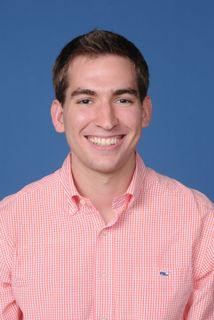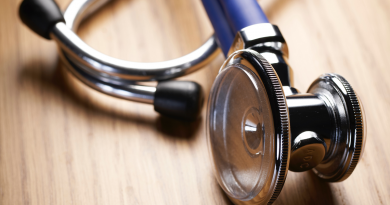Yes, of course I named my cadaver

Perhaps one of the most defining moments in medical school is unveiling one’s cadaver for the very first time. It occurs in programs all over the world. Usually, like at our school, it happens the first week.
In new, clean scrubs with way too many pockets we filed into a cold, wet, and excessively well-lit lab. Shy whispers soon turned into excited clamor as we discovered whom our partners would be for the rest of the course by reading sheets of neatly stapled paper near the lab entrance. We were all undeniably nervous, but blamed our shaking hands on the cold. We giggled to break the tension. We somehow managed to pull off the façade of objective, scientific, starchy-stiff comfort.
Before us were the first signs that we had embarked on our medical education – tanks placed with obsessive organization. The overhead lights made them glisten in a weirdly inviting manner. Pride welled up deep inside as I considered the incredible privilege that I was about to experience. It would be but the first of many times that I would experience what it feels like to be trusted – endlessly, without earning it at all – by a complete stranger.
A voice then instructed us to open the tanks. It taught us how to raise the cadavers and lock the dissection table into place. We looked at each other. Now some hands were really shaking.
“Let’s all open it together,” we decided.
Then, “Let’s all raise it together.”
The unison of our voices covered the nervousness flawlessly.
Now what lie before us was a heap of moist towels. Similar to opening the tank and raising the cadaver, we gingerly peeled back the towels together. The cadaver was face down. No one dared to turn the body over and have a look at the face.
The dissection began with the least intrusive task of all – the removal of the skin of the back. As if draping the cadaver for surgery, we re-covered all but the area of dissection that we were working on. The nervousness melted away as we began our work.
At the end of two hours, much about us was now changed. We had just had an intensely emotional experience, although none of us wanted to talk about it. Our lives and the smell of our scrubs would never be the same.
Perhaps an even more defining moment than the unveiling of the cadaver occurs when a student is finally able to step off the pedestal of faked objectivity and experience what has been uncomfortably welling up inside. Perhaps, like it did for me, it happens when that student is shoved brutally, against his will, and without time to prepare to fall off that pedestal into the ooze of blubbering, hot emotion.
This occurred during my second week of class. It was now time to flip the cadaver over to begin dissection of the upper arm and brachial plexus, an important nerve bundle located near the shoulder. Because this dissection would be longer, it was advised that we come in after-hours. So around 4 p.m. one afternoon, my group met up to get to work on “Cliff” (the name we had given him). After 30 minutes, the others headed home, and I promised them I’d finish my portion before the next morning’s dissection.
After they left, I looked around and realized I was the only one left in the room. The music that had been playing before was turned off. It was just me and Cliff, and it felt uncomfortable. I began working again, hoping that the continued activity would suppress what was welling up within me. I so longed to make sense of it all, but I suppose some part of me was afraid to do so. Looking back now, it all seems so ridiculous. That’s because, luckily, it was Cliff who made the first move.
The towel covering his face had been flipped up on itself ever so slightly, and as I leaned in, my forearm brushed up against his beard. Immediately, I flinched my arm away; it was as if Cliff had reached out and grabbed my hand with his. I stopped, put my tools down, and fixated at his exposed patch of scraggly 5-o’clock shadow. I thought back to the tender moments when as a young child, I would rub my face against my father’s. “Scratchy face,” I had called it. I also thought back to my grandfather’s last days. Even though he was in tremendous pain from metastatic cancer, he never missed a day of shaving himself. He never wanted help. He would fuss when my grandmother asked to do it for him. Even at his funeral, he was the most handsome man in the room.
I wondered… who had these moments with Cliff?
Just like that, he had become something more. I was immediately and utterly humbled by the experience. Cliff had revealed himself to me in a very human manner, and he had touched me in a way that I didn’t expect. It was probably the most formative minute of my medical education thus far.
Many medical students and doctors will endearingly tell you that their cadavers were the best teachers they ever had. They’ll remember 50 years later the anatomical abnormalities they found. They’ll tell you about the tattoos, the scars, the implants, the tumors, and maybe even the embedded bullets. They’ll remember the smell of the lab for sure. Cliff taught me anatomy, but that’s not the only reason I consider him to be one of my best teachers. He also taught me how to be human.



I remember well my cadaver Evelyn, and the scrub odor “essence of Rvelyn”, I would explain to my wife. I owe all to Evelyn and Dr Harvey, reflecting on my 25 year career as an OBGYN.
I graduated BCM May of 1988. Congratulations to you on your entry into the world of medicine.